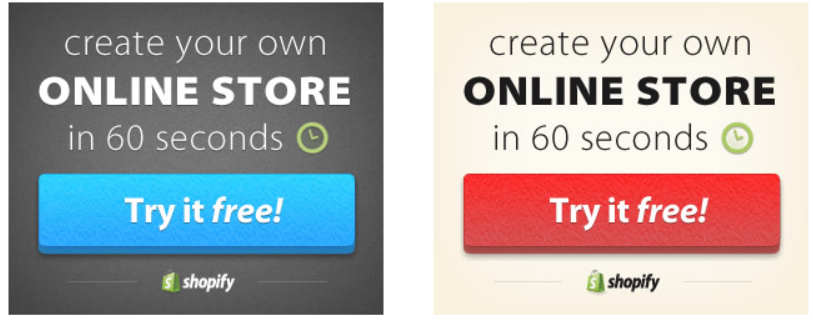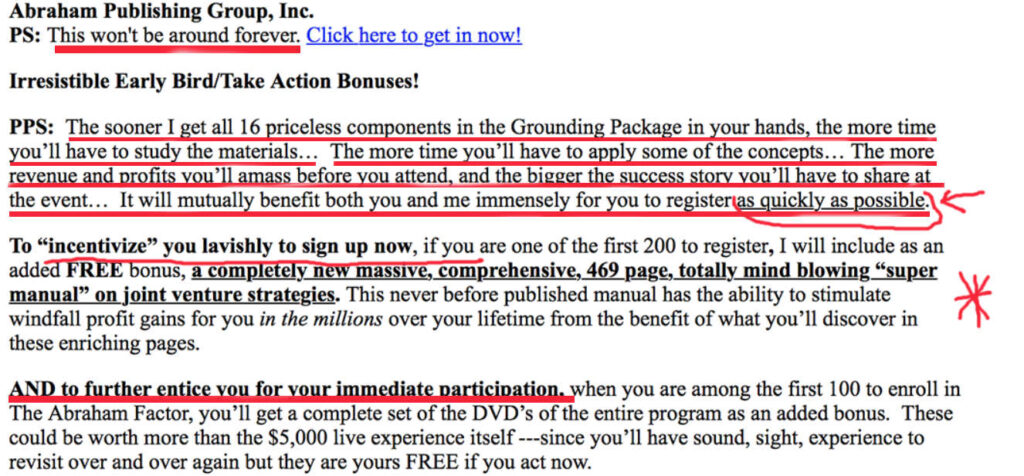In the heart of a bustling European city, an art gallery stood—a haven for creativity, a shrine to brushstrokes that whispered of genius. The walls dripped with the work of highly skilled, widely respected painters, their masterpieces waiting to be adored.
And yet… crickets.
The gallery owner, a successful artist himself, had a problem: no one was buying. His business, once thriving, was now in a precarious waltz with financial ruin. The paintings hung in eerie silence, their unsold presence practically begging for attention. Rent loomed like a grumpy landlord on a power trip, threatening to snuff out the gallery’s light.
But our artist? He wasn’t about to go down without a fight.
Enter: The Master Plan
If art alone wasn’t enough to move canvases, strategy would be. So, he cooked up a plan—not just any plan, but a performance, a psychological masterclass in urgency and scarcity
First, he needed the right audience. Not just any casual art lovers, but the wealthy, the elite, the people who didn’t blink at five-figure price tags for things they “simply must have.” These weren’t just buyers; they were collectors, connoisseurs—the type who saw art as an investment, a flex, or both.
And so, with the precision of a seasoned chess player, he orchestrated his guest list.
He sought out local artisans—not just anyone with decent handwriting, but true calligraphy artists, the kind whose ink flowed like poetry. These artisans were tasked with creating exclusive, hand-lettered invitations, each a piece of art in itself. Delivered by well-dressed local boys (because nothing screams exclusivity like a personal messenger in formalwear), the invitations whispered:
“Come. Behold what awaits within these hallowed walls.”
Of course, the recipients were told only a few paintings were available. Limited. Exclusive. Once-in-a-lifetime. Because let’s be honest—nothing makes people want something more than the idea that they might miss out.

The Event That Made Art Buyers Lose Their Minds
As the sun dipped below the skyline, the gallery doors swung open. Inside? A private soirée dripping in elegance. Wine flowed. Silver trays paraded hors d’oeuvres. The air was thick with expectation (and possibly just the right amount of pretension).
But here’s where things got interesting.
At precisely 8 PM, the lights dimmed. The guests were ushered into a candlelit auction room—because, of course, drama matters.
At the front stood the gallery owner, poised like a maestro about to conduct a symphony. Beside him? His assistant, mallet in hand, standing next to a massive oriental gong.
And then, the moment of genius:
“Ladies and gentlemen,” the owner announced, “once the auction begins, you have five minutes to claim a masterpiece. When the gong tolls, your chance is gone.”
A collective gasp. Hushed whispers. Eyes darting around the room.
And just like that—bidding madness.
Five minutes. That’s all they had. The urgency was electric. The gong became the heartbeat of desire. When it sounded, regret rippled through the room—a lost opportunity, never to return.
Did he sell every painting? No. But did he skyrocket his sales in a single night? Absolutely.
Why Urgency & Scarcity Work—Every. Single. Time.
This, my friends, is how you move people to action.
It’s not just about the art. It’s not even about the money. It’s about psychology.
The same principles that sent wealthy art lovers into a bidding frenzy are the same ones that drive online sales, email campaigns, and high-converting sales pages.
Think about it:
👉 Ever clicked on a “limited-time offer” because you didn’t want to miss out?
👉 Ever scrambled to grab something before the countdown timer hit zero?
👉 Ever justified an impulse buy because there were “only 2 left in stock”?
Yeah. That’s urgency and scarcity at work.
How to Use This Magic in Your Business
In this post, we’re diving deep into how you can weaponize (ahem, strategically implement) urgency and scarcity in your:
✅ Email campaigns (Get them to act NOW.)
✅ Sales pages (Make them feel the FOMO.)
✅ Promotions (Turn indecision into instant action.)
Because without urgency, people wait.
And when people wait, they don’t buy.
Let’s make sure that doesn’t happen to you.
Buckle up—your crash course in urgency and scarcity starts now.
Using Scarcity and Targeting the Affluent
These recipients weren’t mere guests; they were art lovers—connoisseurs who understood the alchemy of brush and canvas, the magic of color and form. Their wealth was matched only by their appreciation for quality. And so, the invitations bore witness to their shared passion—a calligraphy dance that whispered, “Come, behold what awaits within these hallowed walls.”
The letters arrived in elegant envelopes, sealed with a touch of mystery. Local boys, dressed in their Sunday best, hand-delivered each message. They were told that this was an exclusive event and that there were a limited number of paintings to be sold. As the sun dipped below the horizon, the gallery doors swung open, revealing a private showing—a soirée where wine flowed freely, and hors d’oeuvres danced on silver trays.
But the stroke of genius lay in the details. At precisely 8 PM, the guests filed into a dimly lit room, their gazes assessing both art and each other. The gallery owner, poised at the podium, unveiled the first piece—an oil painting that shimmered with beauty.
Now for the Urgency in the Offer…
Beside him stood an assistant, mallet in hand, next to a beautiful oriental gong. The rules were clear: minutes to admire, seconds to bid. “Ladies and gentlemen,” the owner announced, “once the auction begins, you have five minutes to claim a masterpiece. The gong will toll, and the opportunity will vanish.”
A gasp swept through the room, followed by hushed murmurs. The bidding frenzy ignited—a dance of wealth, desire, and urgency. Five minutes—no more, no less—to possess a fragment of eternity. The gallery walls absorbed the tension, and the gong’s echo became a heartbeat.
Of course, the bidding was fast and furious and the owner didn’t sell everything, but his sales soared throughout the evening.
This, my friends, is the power of urgency and scarcity. It transcends gallery walls, reaching beyond the polished frames and hallowed halls. It infiltrates boardrooms, whispers in the corridors of decision-makers, and tiptoes across online marketplaces.
Whether it’s the resounding echo of an auctioneer’s gavel or the relentless digital countdown on a website, urgency and scarcity compel action. They beckon the hesitant, electrify the ambivalent, and ignite desire. In those fleeting moments, choices are made, fortunes shift, and destinies pivot.
In this post, we will dive deeper into how you can harness these twin forces—urgency and scarcity—in your email campaigns, sales letters, and other strategic materials. Brace yourself, for within these words lies the alchemy that can boost sales, elevate conversions, and fortify your bottom line.
So, as we delve deeper into this post, let us explore how you can wield these twin forces to transform your business, ignite desire, and leave your audience breathless.
What Is Scarcity and How Can It Be Used in Copywriting?
Scarcity, in its simplest form, refers to the state of presenting an item or service that is scarce or in short supply. In copywriting, it involves highlighting the fact that you have something that is going to be hard to get or rare due to limited supply. While most people are familiar with this concept, only a few copywriters know how to use it effectively.
Consider this: How many times have you heard the phrase in a commercial, “For a limited time”? Probably a million times a day.
However, skilled copywriters can integrate this concept seamlessly.
What do I mean by that?
They can convince you that they have something in short supply without you even realizing it.

How I Was Convinced by a Top Dog Copywriter
Once, a famous copywriter, considered an “A-list” writer, penned a letter that completely fooled me. He talked about a copywriting course he had written that hadn’t been sold in years and was sitting on his shelf gathering dust.
This copywriter also mentioned that he had tons of these sales letters he had written (referred to as swipe files) with the course that could be used to teach a person how to master the art of copywriting and make a substantial amount of money.
He went on about his career and how he was planning to put his copywriting life on the back burner because he wanted to spend more time with his grandchildren and wife.
Also, he expressed that even though he loved the art of copywriting and how it had made him a millionaire, he didn’t want to continue with it because he felt it was time to enjoy the wealth it had produced. This narrative went on for almost ten pages, detailing his longing to retire and his appreciation for the success he had achieved with copywriting.
Near the end of this epic, he started discussing how he had talked with his wife about whether he should sell the last few copies of his course. (Since he only had a few of them left, he decided he should sell them.)
Finally, he said, “What the heck, if you’re interested, contact me and I’ll set up a time for us to discuss selling one of these remaining courses to you. But be warned, it will be costly.” Given that he was one of the biggest names in copywriting, this course would undoubtedly be worth it.
I was hooked and wanted to get my hands on it.
I discussed it with some other copywriters I knew, and one of them said, “Yeah, I read that same sales letter that he wrote 15 years ago.”
And that’s when I realized I had been taken on a scarcity ride that was so masterfully done it had completely fooled me.
How Does Scarcity in Copywriting Trigger a Response?
Scarcity in copywriting is a very powerful mind trick that affects a buyer’s decision-making.
It is essential in the process of making decisions and uses the idea of limited resources to meet wants and needs.
The psychological idea behind it is the thought that something is in limited supply, and therefore more valuable. In other words, when things are in short supply, people are more likely to purchase items.
Here are a few examples of what I mean:

In this example, it’s easy to spot four scarcity lines that are prodding the reader to take action.
The first one is in bold which tells you prime locations have already been snatched up. This statement is quickly followed by two more prodding you to take action or the locations will be gone.
So, you can see that they are layering more scarcity ideas on top of each other. Immediately after that is an urgency statement telling you that “fast-action” bonuses are going to expire.
I’d like to point out that many great copywriters know how to layer elements like scarcity and urgency in their copy. You can also layer benefits, solutions, and other elements throughout your copy to make it more powerful.
Here’s another good example of using scarcity in a direct response letter from Frank Kern:

This example is kind of like a “limited stock” offer. If you were selling an item or items and wanted to move them faster, you could tell your prospects that the item is in limited supply.
Once again, the example above has layered scarcity, topped off with an urgency element.
Types of Scarcity Offers You Can Leverage
Scarcity offers can be a powerful tool in your sales pages and ads. Here are three common types used in copywriting:
Limited Time Offers: These are often seen in direct response ads on TV, with phrases like, “Act now, this offer ends soon.” The aim is to instill a sense of urgency in the audience, leveraging the Fear Of Missing Out (FOMO) to encourage immediate action.
Limited Stock Offers: This type of offer informs readers that only a certain quantity of a product is available. In the past, when I sold information products that required printing and my stock was running low, I incorporated this scarcity element into my offers. To emphasize the scarcity, I would sometimes include an image of the remaining stock.
Last Chance Offers: Recently, I received a last chance offer from an embroidery supplier I frequently work with. They offer courses on digitizing for embroidery machines and have been a significant outlet for Hatch Embroidery Software. However, they will soon stop selling digitizing software and are currently holding a “blowout sale” before ending their partnership with the software company.
Here is the offer you’ll see when you go to their page:

Price Scarcity: This is a strategy often used in retail, where a discount is offered for a limited time, typically at the end of a season. Many clothing retailers use this tactic when new stock arrives and they need to clear out old inventory.
Exclusive Access: This strategy involves offering customers exclusive access to a product or service in exchange for their email address. It’s a common experience – you’ve likely encountered it yourself! This method can make customers feel like they’re receiving insider information or special treatment.
It’s important to note that these tactics should be genuine.
Customers can easily become frustrated with deceptive offers, as they may feel manipulated into making a purchase. Therefore, if the offer isn’t substantial or real, these strategies are likely to be ineffective. Always strive for authenticity in your marketing efforts.
Urgency – A Powerful Tool to Motivate Prospects
Urgency is a potent tool in sales, compelling prospects to accept offers. It works by triggering psychological responses. Here are some key strategies involving urgency:
Prospect Theory: Developed by Amos Tversky and Daniel Kahneman in 1979, this theory suggests that people are more driven to avoid losses than to acquire gains. It’s a powerful principle in copywriting. The theory explains that people evaluate gains and losses differently, often favoring the emotional over the logical. The fear of missing out on a good deal often outweighs the prospect of gaining a benefit.
Loss Aversion: This concept is rooted in the idea that the fear of loss is a stronger motivator than the potential for gain. For instance, the thought of missing a $10 deal can be more compelling than finding $10.
Emotional Impact: Emotions often drive purchasing decisions. For example, in the wedding market, suggesting cost-cutting measures to a couple planning their wedding could lead to resistance, as emotional and personal values are attached to purchases.
Price Increase Behavior: Studies show that announcing imminent price increases can boost sales. For instance, a 10% rise in egg prices led to a 4.3% increase in sales. The fear of missing out on current pricing can be a powerful motivator.
Status of Ownership in Urgency Offers: Many individuals derive their social standing from their possessions. Leveraging this concept in your urgency-driven offers can be highly effective. When people perceive that not buying your product would diminish their status, they are more likely to make a purchase. A prime example of this phenomenon is the market for high-priced shoes. Despite the material and production costs being outweighed by the pricing, the status associated with owning these shoes justifies their astronomical price tags.

Examples of How to Use Urgency in Your Offers
Urgency is used all the time in the realm of copywriting. Here are a few examples you can peruse to see them in action:
Frank Kern skillfully combines the principles of scarcity and urgency in his writing. When crafting your own copy, consider starting with scarcity and then gradually introducing urgency to create a compelling message.

Begin with scarcity—highlight limited availability, exclusive offers, or time-sensitive deals. Then, seamlessly transition to urgency by emphasizing deadlines or time-bound benefits.
Another advantage of incorporating urgency into your advertisements and copy is that the more familiar you are with your target market, the more effectively you can integrate this concept.
Take this Spotify ad as an example:

The marketers who crafted this ad were aware of a key motivation: many people are deterred from building a business website due to the time it typically requires. Therefore, they highlighted the speed at which a website could be constructed.
This final example is taken from a comprehensive sales letter by Jay Abraham. Many leading copywriters incorporate postscript sections into their sales letters. In this instance, four or five postscript sections have been utilized.
Below is the copy written by Abraham:

This example perfectly illustrates the use of various reasons to prompt quick action to purchase the product.
Firstly, the offer is presented as temporary, with an unspecified duration, creating a sense of mystery and urgency. It could expire in days or even years.
Secondly, the copy emphasizes the potential loss of benefits the longer you delay the purchase. In essence, immediate action could lead to earlier profits and revenue. Lastly, substantial incentives are offered for immediate purchase.
These include a 469-page manual and a set of DVDs, collectively valued at $5,000.
If this isn’t a prime example of using urgency in a sales pitch, then I’m not sure what is!
Conclusion
In conclusion, the principles of urgency and scarcity are powerful tools in the realm of copywriting. They tap into the human instinct to avoid missing out, creating a compelling call to action that can significantly boost conversions.
However, it’s important to use these principles judiciously. Overuse can lead to skepticism and damage your brand’s credibility.
Remember, the key is to understand your audience and their motivations. When used correctly, urgency and scarcity can create a sense of excitement and immediacy, encouraging customers to take action. Whether it’s a limited-time offer, a bonus incentive, or the prospect of missing out on potential benefits, these strategies can be incredibly effective.
So, as you craft your next piece of copy, consider how you can incorporate these principles to drive engagement and conversions. But always ensure that your offers are genuine and provide real value. After all, the most successful marketing strategies are those that respect and value the customer’s needs and experiences.”
I hope this fuels your writing engine!
If you found this information to be helpful to your business, please leave a comment below it would really make my day.
